Related Research Articles
Multiple designation systems have been used to specify United States military aircraft. The first system was introduced in 1911 by the United States Navy, but was discontinued six years later; the first system similar to that used today was designed in 1919 when the US Army's Aeronautical Division became the United States Army Air Service. Before this, aircraft were put into service under their manufacturers' designations.

A flight surgeon is a military medical officer practicing in the clinical field of aviation medicine. Although the term "flight surgery" is considered improper by purists, it may occasionally be encountered.
The Curtiss-Wright Corporation is a manufacturer and services provider headquartered in Davidson, North Carolina, with factories and operations in and outside the United States. Created in 1929 from the consolidation of Curtiss, Wright, and various supplier companies, the company was immediately the country's largest aviation firm and built more than 142,000 aircraft engines for the U.S. military during World War II.
This is a list of aviation-related events from 1910:
This is a list of aviation-related events from 1904:
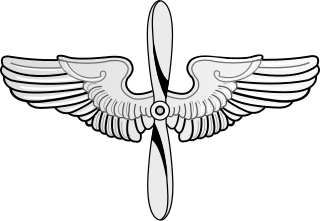
The United States Army Air Service (USAAS) was the aerial warfare service component of the United States Army between 1918 and 1926 and a forerunner of the United States Air Force. It was established as an independent but temporary branch of the U.S. War Department during World War I by two executive orders of President Woodrow Wilson: on May 24, 1918, replacing the Aviation Section, Signal Corps as the nation's air force; and March 19, 1919, establishing a military Director of Air Service to control all aviation activities. Its life was extended for another year in July 1919, during which time Congress passed the legislation necessary to make it a permanent establishment. The National Defense Act of 1920 assigned the Air Service the status of "combatant arm of the line" of the United States Army with a major general in command.

Peter M. Bowers was an aeronautical engineer, airplane designer, and a journalist and historian specializing in the field of aviation.
The Observer Badge is a military badge of the United States armed forces dating from the First World War. The badge was issued to co-pilots, navigators, and flight support personnel who had received a variation in the training required for the standard Pilot's Badge. The Observer Badge survived through the Second World War and into the 1950s, at which time the concept of an Observer Badge was phased out in favor of the modern Aircrew Badge and Navigator-Observer Badges. In addition to wings for Naval Aviators and Naval Flight Officers, the United States Navy still maintains an "Observer Badge" which is issued to flight-qualified mission specialists, such as a select number of meteorologists and intelligence officers in both the U.S. Navy and U.S. Marine Corps. The U.S. Air Force awards its USAF Observer Badge, which is identical to the USAF Navigator Badge, to Air Force officers who have qualified as NASA Space Shuttle Mission Specialists, have flown an actual mission aboard the shuttle and/or the International Space Station and who are otherwise not previously aeronautically rated as an Air Force pilot or navigator.
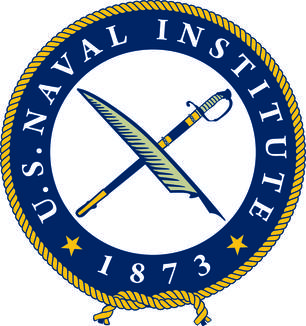
The United States Naval Institute (USNI) is a private non-profit military association that offers independent, nonpartisan forums for debate of national security issues. In addition to publishing magazines and books, the Naval Institute holds several annual conferences. The Naval Institute is based in Annapolis, Maryland.
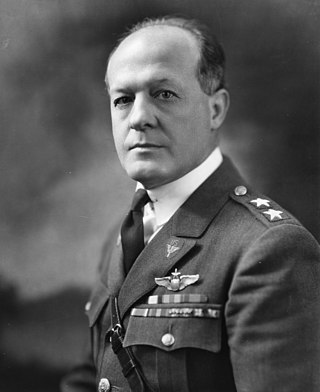
Benjamin Delahauf Foulois was a United States Army general who learned to fly the first military planes purchased from the Wright brothers. He became the first military aviator as an airship pilot, and achieved numerous other military aviation "firsts". He led strategic development of the Air Force in the United States.

The Aeronautical Division, Signal Corps (1907–1914) was the first heavier-than-air military aviation organization in history and the progenitor of the United States Air Force. A component of the U.S. Army Signal Corps, the Aeronautical Division procured the first powered military aircraft in 1909, created schools to train its aviators, and initiated a rating system for pilot qualifications. It organized and deployed the first permanent American aviation unit, the 1st Aero Squadron, in 1913. The Aeronautical Division trained 51 officers and 2 enlisted men as pilots, and incurred 13 fatalities in air crashes. During this period, the Aeronautical Division had 29 factory-built aircraft in its inventory, built a 30th from spare parts, and leased a civilian airplane for a short period in 1911.
The Division of Military Aeronautics was the name of the aviation organization of the United States Army for a four-day period during World War I. It was created by a reorganization by the War Department of the Aviation Section, U.S. Signal Corps on April 24, 1918, still as part of the Signal Corps. It was removed from the Aviation Section by executive order on May 20, 1918, and existed as the sole Army aviation agency until a War Department general order issued May 24, 1918, established it and the Bureau of Aircraft Production, created by the same reorganization on April 24, as coordinate components of the "Air Service". As such, it is recognized by the United States Air Force as the third of its antecedents.

U.S. Air Force aeronautical ratings are military aviation skill standards established and awarded by the United States Air Force for commissioned officers participating in "regular and frequent flight", either aerially or in space, in performance of their duties. USAF aeronautical badges, commonly referred to as "wings" from their shape and their historical legacy, are awarded by the Air Force in recognition of degrees of achievement and experience. Officers earning these badges and maintaining their requirements are classified as rated officers and receive additional pay and allowances.

Olive Ann Beech was an American aerospace businesswoman who was the co-founder, president, and chairwoman of the Beech Aircraft Corporation. She founded the company in 1932 with her husband, Walter Beech, and a team of three others. She earned more awards, honorary appointments, and special citations than any other woman in aviation history and was often referred to as the “First Lady of Aviation”.

Lieutenant Colonel Georges Thenault was the commander of the Lafayette Escadrille – the famed branch of the French air force in World War I composed of American volunteer pilots. The Lafayette Escadrille was created before the United States gave up its neutrality and joined France and Britain in the war against Germany. Once the United States formally entered the war, the Lafayette Escadrille was absorbed into the U.S. Army.
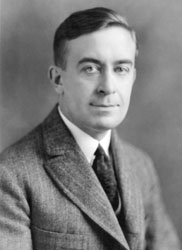
Alfred Victor Verville was an American aviation pioneer and aircraft designer who contributed to civilian and military aviation. During his forty-seven years in the aviation industry, he was responsible for the design and development of nearly twenty commercial and military airplanes. Verville is known for designing flying boats, military racing airplanes, and a series of commercial cabin airplanes. His planes were awarded with the Pulitzer Speed Classic Trophy in 1920 and 1924.

Virginius Evans Clark was an officer in the United States Army, a military aviation pioneer, and a World War I engineer. Clark designed the 1922 Clark Y airfoil used by many early aircraft.

The United States capital, Washington, D.C., has been the site of several events in the nation's history of aviation, beginning from the time of the American Civil War, often for the purpose of promoting the adoption of new aeronautical technologies by the government. It has also been home to several aircraft manufacturers and aviation organizations, and many aerospace contractors have maintained a presence there as well.
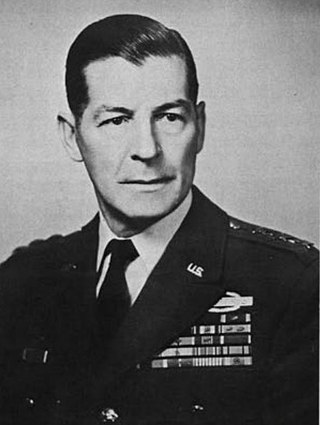
Gordon Byrom Rogers was a United States Army lieutenant general who served in several command positions during World War II and the Korean War, including the United States Military Advisory Group to the Republic of Korea and the 3rd Armored Division.

The United States Aeronautical Reserve (U.S.A.R.) was an early aviation organization created by Harvard University’s Aero Club on September 8, 1910. The founder was John H. Ryan, and the General Secretary Richard R. Sinclair. The earliest aviators and others to enroll near the founding date were: “Glen H. Curtiss, Wilbur Wright, Harry S. Harkness, Augustus Post, Clifford B. Harmon, Allan R. Ryan, Herbert L. Saterlee, ex-governor Curtis Guild, Jr.,, Edwin Gould, Charles K. Hamilton, Horace F. Karnay, John G. Stratton, George M. Cox, Gen. Nelson A. Miles, Commodore John H. Hubbard, Charles F. Willard, Charles J. Glidden, Walter Brookins, Ralph J. Stone, William Hilliard, Cromwell Dixon, Samuel F. Perkins, Capt. Thomas F. Baldwin, Greeley S. Curtiss, General W. A. Bancroft, and Adams D. Clafton.”, Recruiting stations were at Harvard University, in Boston, Massachusetts; Mineola, Long Island; and Belmont Park, Long Island.
References
- 1 2 3 4 Hayles, John (5 May 2007). "Aircraft Magazines Guide". Archived from the original on 12 March 2012. Retrieved 19 December 2011.
- 1 2 "Emory H. Rogers". U.S. Air Service. 6 (6). Army and Navy Air Service Association: 32. January 1922. Retrieved 30 May 2022.
- ↑ Ivonette Wright Miller. "MS-216, Ivonette Wright Miller Papers" (PDF). Dayton, Ohio: Special Collections and Archives, University Libraries, Wright State University: 41. Retrieved 19 December 2011.
{{cite journal}}: Cite journal requires|journal=(help)